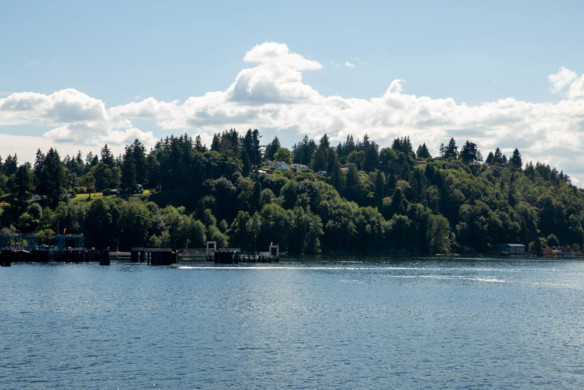Not Bordeaux or Napa, It's Washington State Wine
Touring Vineyards, Talking Terroir & Tasting Vintages with WA’s Top ProducersFor me, it started over ten years ago: a fascination with a region that I had paid very little attention to previously. I still remember the day clearly, walking into one of my favorite wine stores to find that a large-scale tasting was going on in the middle of the store. Granted, even in those days, this type of tasting was never my cup of tea, yet something propelled me to jump in and grab a glass. There was no theme to this tasting, simply two large tables with multiple distributors pouring their wares for the store’s customers. I followed the format, starting at the beginning and working myself over to the next pour, one after another.
I stopped tasting immediately, removed myself from the horde of thirsty customers, found a salesperson, and bought a case.
The Best Way to Learn About a Wine Is from the SourceThe fact that it took this long for me to finally make it out to Washington State is amazing to me, but this year it finally happened.
Each of them displayed a unique style, while educating me about the diversity of terroir and vineyard management. However, each of them was, without a doubt, Washington wine before anything else. While many of the producers would say that they are closer to Bordeaux than Napa, which I believe has more to do with their structure and strong roots to the earth, to me, they’re not giving themselves enough credit. Like Something from a Fantasy Novel: The Missoula FloodsFor one thing, Washington State has an amazing, unique terroir, created by a series of cataclysmic floods over 12,000 years ago. We’re not talking
The Columbia Valley at a Glance
Then There Are the VintagesHot, Hot, Hotter, and then 2016! You can’t talk vintages in Washington without accepting one fact: it’s getting progressively warmer each year, yet you’d be amazed by what the region has turned out in 2013, 2014 and 2015. Being a fan of Old World reds, I’ve been trained to associate warm vintages with hot wines, yet that’s not what you’ll find here. Then there was 2016, which was the vintage most often talked about and tasted from bottle with producers on this trip. While the past vintages forged wines of intensity and power, the long and even summer months of 2016 created wines with classic lines, stimulating acidity, and gorgeous tannic complexity. I kid you not; they were so balanced that you’d be hard-pressed to save any for the cellar, yet the 2016s will mature beautifully–I can guarantee it. As for 2017, it was another scorcher, affected also by smoke coming up from the fires in California, which slowed ripening. That being said, I found a lot to like from what I tasted from barrel, even if they weren’t as exciting as the 2016s. On to the Tasting NotesGramercy CellarsGreg Harrington is the mastermind behind Gramercy Cellars, a project that has quickly gone from one man’s dream to an industry leader in the Gramercy Cellars Viognier 2018 – The nose showed fresh citrus, ripe stone fruits, dark florals and lifting minerality. On the palate, soft yet energetic textures flooded the senses, as brisk acids gave way to citrus-tinged stone fruits with a zing of minerals and hints of spiced florals that lasted throughout the finish. (90 points)
Gramercy Cellars Pinot Noir Ribbon Ridge 2017 – The nose showed zesty red berries, peppery herbs, dried florals and lifting minerality. On the palate, I found soft textures, offset by tart red berries, with a peppery, herbal twang. The finish was medium in length, showing tart red fruits, blackberries, and lingering minerality. (91 points) Gramercy Cellars The Third Man Grenache 2016 – The nose was remarkably fresh and floral, showing ripe strawberry and zesty spices. On the Gramercy Cellars Syrah Walla Walla Valley 2016 – The ‘16 Syrah led off with a whiff of peppery herbs, giving way to exotic florals and young crushed blackberries. On the palate, I found a soft expression, with minerals and acids giving way to dark black fruits, in a slightly lean expression which turned spicier over time. The finish was long and spicy, with cheek-puckering acidity and lingering red fruits. I think this just needs a little time to settle down before it starts to provide some highly pleasurable drinking. (92 points) Gramercy Cellars Syrah Les Collines Vineyard 2016 – The nose showed a depth of dark red and black fruits, offset by exotic florals, smoke, pepper Gramercy Cellars Syrah Forgotten Hills 2016 – The nose was unexpectedly fresh, showing peppery herbs up front, with smoky spices and tart black fruits. On the palate, I found a feminine expression, with lean pepper-infused black fruits giving way to sweet spice and inner floral tones. The finish was medium in length, display saline-minerality and echoes of black fruits. (91 points) Gramercy Cellars Syrah The Deuce 2014 – Here I found a zesty expression of Syrah, as a mix of red and black fruits gave way to fresh peppery Gramercy Cellars Syrah Red Willow Vineyard 2016 – The nose showed dark fruits with lifting floral tones, giving way to moist earth, yet maintaining freshness through smoky minerality. On the palate, I found a zesty blend of black fruits and spices, in a very primary and energetic expression, which I found to be quite enjoyable. The finish was long, showing cool-toned black fruits, lingering minerality and hints of sweet spice. (94 points) Gramercy Cellars Syrah John Lewis 2016 – The nose showed a mix of fresh wild berry fruits, with smoky minerality expanding in the glass, then savory spice and earth tones. On the palate, I found silky textures offset by balanced acids and giving way to black fruits, tinged with savory herbs, minerals and inner smoke. Fine acids and tannins resonated on the long finish, as salty minerals and savory herbs tapered off to reveal dried black fruits. This is a gorgeous wine. (95 points) Gramercy Cellars Cabernet Sauvignon Columbia Valley 2016 – The nose was fresh, showing dark red fruits with dusty florals and hints of graphite. Gramercy Cellars Cabernet Sauvignon Reserve 2016 – The nose was restrained at first, slowly opening up to reveal polished black fruits, with lifting florality and mineral tones. On the palate, I found a silky expression energized by vibrant acids, as saline-minerality and spice saturated the senses, leaving a coating of fine tannin in their wake. The finish was long, displaying a stain of black fruit on the palate, with resonating acidity, fine tannins and a lingering note of hard red candies. This is a wine in need of time in the cellar, but should be very pretty once its structure backs down through maturity. (92 points) Figgins EstateDo you know the name Chris Figgins? Well, you should, especially if you know the name Leonetti. Chris Figgins, the son of Leonetti’s founder Gary
Figgins Estate Red Wine 2015 – The nose was wonderfully dark and savory, showing a mix of black raspberry, cherry, blackberry, dusty minerals, and spice. On the palate, silky textures were firmed up by zesty spice, acids and tannin, accompanied by an intense wave of briary raspberry, cinnamon and saturating minerals. The finish was long and structured with cool-toned red and black fruits, inner florals and lingering minerality. What a zesty, structured yet already enjoyable vintage for Figgins. (94 points) Leonetti (And the Toil Oregon Project)Leonetti, Walla Walla’s first commercial winery founded in 1977, continues to strive for a classic, balanced style. With a constant eye on the future, and In my opinion, this is the benchmark estate of the region, and they set that mark high. Expect to find wines Leonetti Sangiovese 2016 – Here I found a display of crushed raspberry and cherry with dusty spices, minerals and dried florals. On the palate, soft textures were offset by zesty red berries, savory spices, and mouthwatering acidity. The finish was long, turning slightly darker in fruit profile, with spice and tannins pinching at the senses. This is so easy to like, and it really shows the best of both worlds, as you could have convinced me that I was in Italy. (93 points) Leonetti Merlot 2017 – The nose was dark and earthy, with red fruits first, giving way to hints of moist soil and blueberry skins. On the palate, I found Leonetti Cabernet Sauvignon 2016 – The nose was dark yet zesty, showing woodland herbs against polished black fruits, dried florals, and sweet spices. On the palate, I found silky textures, offset by cool-toned acidity, as fresh black fruits enveloped the senses, washed clean by another burst of acid and saturating minerality, creating a wonderfully balanced expression. The finish was long, as saturating dark fruits and minerals gave way to sneaky tannins, leaving an impression of youth but also one of pure satisfaction. I love it when the hype is justified. (96 points) Leonetti Cabernet Sauvignon Reserve 2016 – Here I found a mix of dark, herbal-infused fruit, with lifting mineral tones and sweet spice. On the Leonetti Cabernet Sauvignon 2007 – The nose was dark, showing peppery herbs, dried orange, dusty spices and black fruits. On the palate, I found a silky expression, with cool-toned red fruits, minerals and dark inner floral tones, as unbelievably youthful tannins emerged. The finish was long, yet still quite structured for a wine of this maturity, with saturating red berries, spices and a contrast of mouthwatering acids versus fine tannin. (94 points) Leonetti Aglianico 2013 – The nose was dark and spicy, giving way to a smoky expression of dark earth, savory herbs, and black fruit. On the palate,
Toil Chardonnay 2018 – Here I found a restrained expression of yellow orchard fruits, lemony citrus and minerals. On the palate, soft textures gave way to citrus-tinged green apple in a caressing and easy-to-like expression of Chardonnay. The finish was long, turning a bit zesty through late-arriving acids, as inner florals and tart apple lingered on. (91 points) Quilceda CreekQuilceda Creek is the result of Alex Golitzin’s passion for winemaking, as he and his wife took a hobby that he pursued in his spare time, and grew it Quilceda Creek CVR Columbia Valley 2016 – The nose was spicy, with cool-toned dark fruits, wild herbs, hints of cedar and pine resin. On the palate, velvety textures were offset by zesty acids, sweet spice and slightly tart red berries, in an energetic and spicy expression. The finish was long, resonating of tart black berries, wild herbs, a twang of acid and savory spice. (92 points) Quilceda Creek Palengat Red Wine 2016 – The nose was spicy and fresh, with bright red berry fruits, sweet herbs, hints of violets, brown sugar, and cedar dust. On the palate. I found soft elegant textures complemented by purple floral-tinged dark red fruits, zesty spices and energizing acidity. The finish was long, showing blue and red fruits while coating the senses in purple florals and sweet spice, with a hint of lingering tannin that was nearly enveloped by the wine’s textural depth. (95 points) Quilceda Creek Cabernet Sauvignon 2016 – The nose was dark with wild herbs up front, followed by dark red fruits, savory spice, crushed stone and Quilceda Creek Cabernet Sauvignon Galitzine Vineyard 2016 – The nose was intense, showing crushed raspberry and blackberry with spicy florals, crushed stone minerality, cedar, graphite, and hints of wild herbs. On the palate, I found silky, enveloping textures with a mix of blue and black fruits, firmed up by brisk acids and mounting tannin. The finish was wonderfully long, structured, yet still elegant, showing pretty ripe berries, plum, and with a staining of purple-tinged flowers across the senses. (96 points) Andrew Will (and Pollard)My tasting at Andrew Will included so much more than the two wines listed below, but without a pen, or an extra hand to type on my cell phone, I had However, it’s not just Chris who we have to thank for their diverse portfolio of Bordeaux blends, with Chris’s son Will taking over operations, and his daughter, brother, and even Robin Pollard (of Pollard Vineyards) also in the mix. At their home and winery on Vashon Island, you’ll find a family that grows their own food, tends their own livestock, makes their own bread, and also happens to be some of the best winemakers in Washington State. Andrew Will Champoux Vineyard Horse Heaven Hills 2014 – The nose was incredibly fresh and spicy, showing crushed blackberries, Andrew Will Two Blondes Yakima Valley 2014 – The nose on the two blondes was incredibly spicy at first, as it slowly blossomed in the glass to reveal a mix of dark red, black and blueberry fruits, complemented by sweet spice and hints of crushed stone minerality. On the palate, I found a refined and polished expression, seeming to put each foot right, as ripe dark fruits were ushered across the senses, leaving a coating of saline-minerals and spice. The finish was long, showing the wine’s hidden structure, as minerals and sweet herbal tones lingered on. (94 points) Pollard Vineyard Merlot 2017 – Here I found a remarkably pretty expression of Merlot, showing violet-tinged, ripe blue fruits, sweet herbs and dusty Pollard Vineyard Red Blend 2016 – The nose was spicy and exotic, showing a zesty mix of wildberry fruit, offset by a spitz of citrus and pretty floral tones. On the palate, I found silky textures, giving way to notes of blueberry jam and sweet spice, yet perfectly balanced and refined. The finish was long, resonating on ripe fruit with rounded tannins and a hint of minerality. This was so easy to like! (91 points) Credits and ResourcesArticle, Photos and Tasting Notes by Eric Guido Thank you to David Bowler Wine for organizing the trip and visits Visit the Figgins Family Wine Estates website for more info on Leonetti, Figgins and Toil Visit the Andrew Will Winery website Visit the Quilceda Creek website Visit The Gramercy Cellars website Visit the Doubleback Winery website View the Washington wine selection at Morrell Wine |

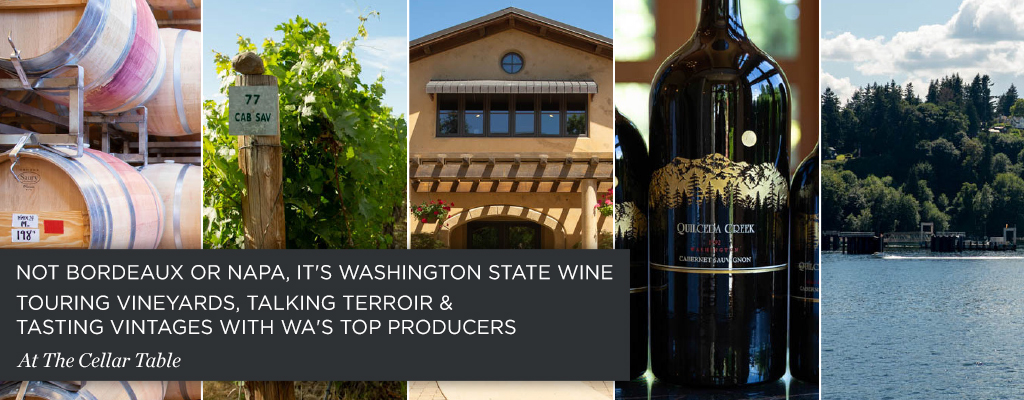
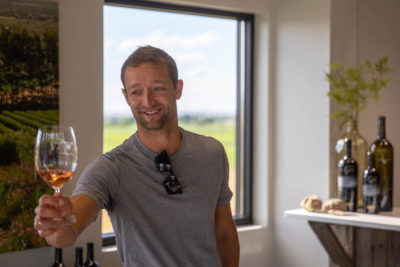 bit, but I couldn’t place it. It was Cabernet Sauvignon at the core, with a small mix of other Bordeaux varietals, but it wasn’t Bordeaux. Nor was it Napa or Sonoma, as its fruit had a focus with a sensation of crackling minerality on the palate, and the tannins were more Old World, as opposed to the rounded, sweet tannins I associated with California. I asked to see the bottle, and lo and behold, it was a Washington State Bordeaux blend.
bit, but I couldn’t place it. It was Cabernet Sauvignon at the core, with a small mix of other Bordeaux varietals, but it wasn’t Bordeaux. Nor was it Napa or Sonoma, as its fruit had a focus with a sensation of crackling minerality on the palate, and the tannins were more Old World, as opposed to the rounded, sweet tannins I associated with California. I asked to see the bottle, and lo and behold, it was a Washington State Bordeaux blend.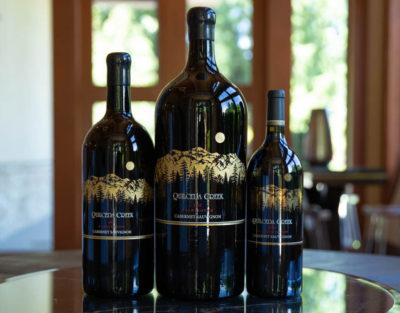 while also feeling assured that the wine would continue to mature in a positive way. I came to know this as one of the best features of Washington State wine; they simply seem to give pleasure from day one throughout their entire life span. When that case was gone, I went on the hunt for another, as well as to educate my palate with more producers from the region.
while also feeling assured that the wine would continue to mature in a positive way. I came to know this as one of the best features of Washington State wine; they simply seem to give pleasure from day one throughout their entire life span. When that case was gone, I went on the hunt for another, as well as to educate my palate with more producers from the region.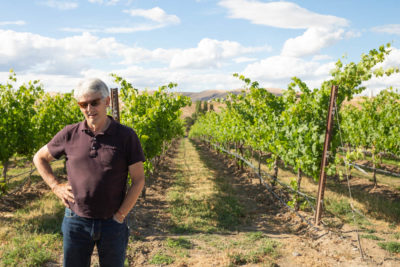 top producers. The list read like a who’s who of Washington State wine, including Doubleback, Gramercy Cellars, Figgins Estate, Leonetti, Toil (actually Oregon fruit), Quilceda Creek, and Andrew Will.
top producers. The list read like a who’s who of Washington State wine, including Doubleback, Gramercy Cellars, Figgins Estate, Leonetti, Toil (actually Oregon fruit), Quilceda Creek, and Andrew Will.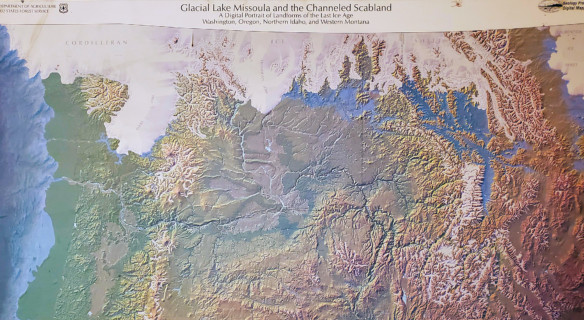 about tsunami-size waves here; what we’re talking about is enough water to raise existing lakes and rivers over 400 feet. This was all the result of Lake Missoula, a giant body of water that was created through the melting of a glacier during the end of the last ice age. As the natural ice damn that held the waters back would crack and crumble, gigantic waves would come rushing out at 50 to 60 mph, flooding most of eastern Washington with water carrying a diverse collection of deposits and boulders from the melting glacier. Those deposits would come to be known as ‘Warden silt loam’, a well-draining, loose soil which lacks nutrients and forces vines to dig their roots deep into the earth of the Columbia Valley. Only locations over 1200 feet (Figgins estate vineyards is a good example) were left unscathed. However, for Figgins, it’s also what sets them apart from their neighbors.
about tsunami-size waves here; what we’re talking about is enough water to raise existing lakes and rivers over 400 feet. This was all the result of Lake Missoula, a giant body of water that was created through the melting of a glacier during the end of the last ice age. As the natural ice damn that held the waters back would crack and crumble, gigantic waves would come rushing out at 50 to 60 mph, flooding most of eastern Washington with water carrying a diverse collection of deposits and boulders from the melting glacier. Those deposits would come to be known as ‘Warden silt loam’, a well-draining, loose soil which lacks nutrients and forces vines to dig their roots deep into the earth of the Columbia Valley. Only locations over 1200 feet (Figgins estate vineyards is a good example) were left unscathed. However, for Figgins, it’s also what sets them apart from their neighbors.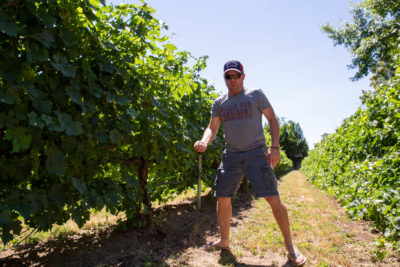 region, which receives around 300 days of sunshine and only 6-8 inches a water each year. Then add in the loess soils (Warden silt loam) I mentioned above, and you may as well be on a different planet than Napa and Bordeaux.
region, which receives around 300 days of sunshine and only 6-8 inches a water each year. Then add in the loess soils (Warden silt loam) I mentioned above, and you may as well be on a different planet than Napa and Bordeaux.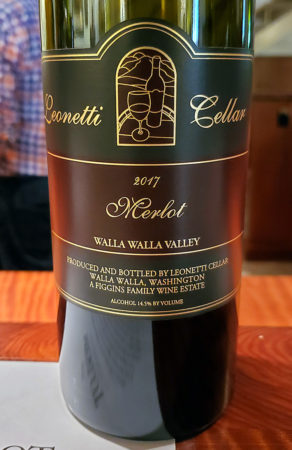 The Columbia Valley, which produces the lion’s share of Washington wine, hosts the renowned AVAs of Walla Walla Valley, Horse Heaven Hills, Red Mountain, and Yakima Valley. Although Cabernet seems to be king here, many producers will tell you that it’s Merlot that they love the most. Just ask Chris Camarda of Andrew Will, or Chris Figgins of Leonetti, who tends to some of the oldest Merlot vines in the entire State.
The Columbia Valley, which produces the lion’s share of Washington wine, hosts the renowned AVAs of Walla Walla Valley, Horse Heaven Hills, Red Mountain, and Yakima Valley. Although Cabernet seems to be king here, many producers will tell you that it’s Merlot that they love the most. Just ask Chris Camarda of Andrew Will, or Chris Figgins of Leonetti, who tends to some of the oldest Merlot vines in the entire State..jpg) Washington State wine scene. Having earned the prestigious title of Master Sommelier at the young age of 26, Greg’s continued experience in restaurants overseeing the wine programs for many of the top names in the country propelled him to follow his passion for winemaking. He found his new home in Washington State, producing a selection of single-vineyard Rhone varieties and Cabernet Sauvignon. With that being said, for my taste, I find the John Lewis Syrah, a blending of vineyards, to be the most compelling.
Washington State wine scene. Having earned the prestigious title of Master Sommelier at the young age of 26, Greg’s continued experience in restaurants overseeing the wine programs for many of the top names in the country propelled him to follow his passion for winemaking. He found his new home in Washington State, producing a selection of single-vineyard Rhone varieties and Cabernet Sauvignon. With that being said, for my taste, I find the John Lewis Syrah, a blending of vineyards, to be the most compelling.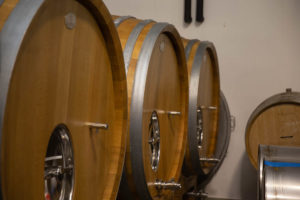 Gramercy Cellars Rosé Olsen Vineyard 2018 – The nose was earthy, showing a mix of strawberry and ripe peach, with crushed stone minerality adding depth. On the palate, I found a soft and enveloping expression, mixing strawberry and stone fruits, with a zing of acid toward the finale. The finish was medium in length and wonderfully fresh, with hints of ripe orchard fruits slowly tapering off. Lovely. (89 points)
Gramercy Cellars Rosé Olsen Vineyard 2018 – The nose was earthy, showing a mix of strawberry and ripe peach, with crushed stone minerality adding depth. On the palate, I found a soft and enveloping expression, mixing strawberry and stone fruits, with a zing of acid toward the finale. The finish was medium in length and wonderfully fresh, with hints of ripe orchard fruits slowly tapering off. Lovely. (89 points)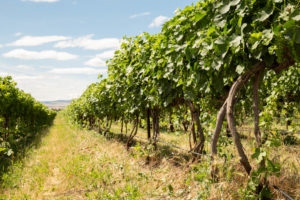 palate, I found silky textures giving way to ripe strawberries, sweet spices and mounting inner floral tones. The finish was long, lingering on wild berries,and hints of fine-grained tannins. As domestic Grenache goes, this was very pretty and showed a lot of varietal character. (92 points)
palate, I found silky textures giving way to ripe strawberries, sweet spices and mounting inner floral tones. The finish was long, lingering on wild berries,and hints of fine-grained tannins. As domestic Grenache goes, this was very pretty and showed a lot of varietal character. (92 points)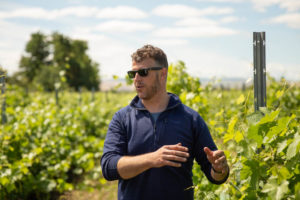 and spice. On the palate, silky-soft textures were offset by vibrant acidity, ushering in saline-minerality, spice and tart black fruits. The finish was long, displaying dark wild berries, a zing of residual acids and hints of grippy tannin which tugged at the cheek. Very Nice. (93+ points)
and spice. On the palate, silky-soft textures were offset by vibrant acidity, ushering in saline-minerality, spice and tart black fruits. The finish was long, displaying dark wild berries, a zing of residual acids and hints of grippy tannin which tugged at the cheek. Very Nice. (93+ points)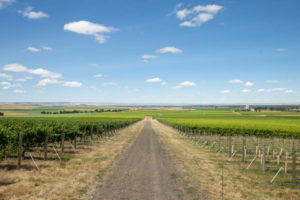 florals and hints of smoke. On the palate, light textures were energized by zesty acidity and backed by notes of savory spice and tart wild berry fruits. The finish was medium in length, resonating of acids and spice, yet also drying to the senses. (89 points)
florals and hints of smoke. On the palate, light textures were energized by zesty acidity and backed by notes of savory spice and tart wild berry fruits. The finish was medium in length, resonating of acids and spice, yet also drying to the senses. (89 points)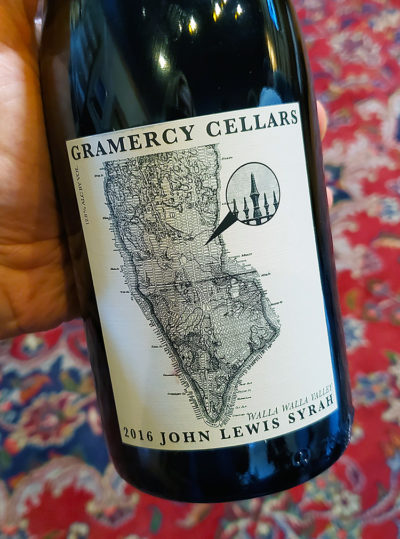 On the palate, I found silky textures, mixing dark fruit and sweet spice, as minerality and acids cut through an otherwise rounded mid-palate, giving way to youthful tannins. The finish was long and spicy, resonating on fine tannins and lingering acidity. (90 points)
On the palate, I found silky textures, mixing dark fruit and sweet spice, as minerality and acids cut through an otherwise rounded mid-palate, giving way to youthful tannins. The finish was long and spicy, resonating on fine tannins and lingering acidity. (90 points)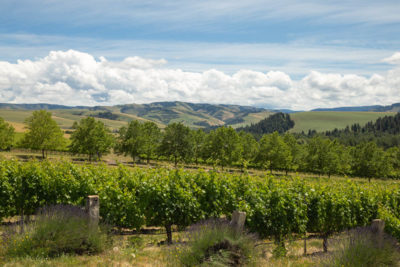 Figgins, is a man that has his eye on the future of both Leonetti, Figgins Estate and the ever-evolving world of domestic wine. Within only moments of talking with Chris, the first thing that stood out to me was his love for Washington and its wines. The Figgins estate vineyard lies above the “flood line” and is the highest elevation Walla Walla vineyard producing Bordeaux varietals in Washington. It should come as no surprise that the 2015 estate red was perfectly balanced, even when you take the heat of the vintage into consideration.
Figgins, is a man that has his eye on the future of both Leonetti, Figgins Estate and the ever-evolving world of domestic wine. Within only moments of talking with Chris, the first thing that stood out to me was his love for Washington and its wines. The Figgins estate vineyard lies above the “flood line” and is the highest elevation Walla Walla vineyard producing Bordeaux varietals in Washington. It should come as no surprise that the 2015 estate red was perfectly balanced, even when you take the heat of the vintage into consideration.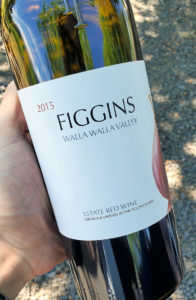 Figgins Riesling Estate 2018 – The 2018 Figgins Dry Riesling clocks in at only .4 grams of residual sugar and tastes bone dry, pouring into the glass with a greenish hue. The nose was intense with mineral-infused green citrus, granny smith apple, wet stone and earthy florals. The palate was fresh with a zing of spicy acids, green apple, grapefruit and inner florals. It finished spicy and long, resonating of mouthwatering acids and green citrus. So pleasing to the palate and a perfect wine to pair with almost anything. (92 points)
Figgins Riesling Estate 2018 – The 2018 Figgins Dry Riesling clocks in at only .4 grams of residual sugar and tastes bone dry, pouring into the glass with a greenish hue. The nose was intense with mineral-infused green citrus, granny smith apple, wet stone and earthy florals. The palate was fresh with a zing of spicy acids, green apple, grapefruit and inner florals. It finished spicy and long, resonating of mouthwatering acids and green citrus. So pleasing to the palate and a perfect wine to pair with almost anything. (92 points)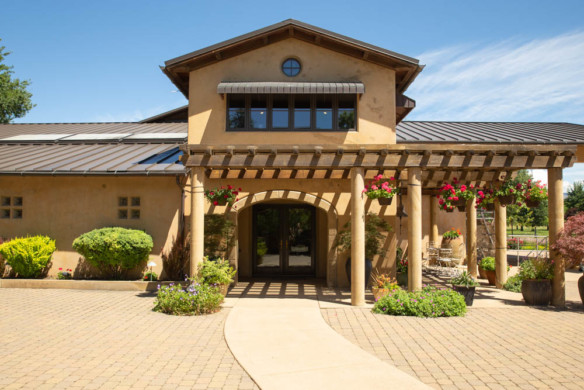 a no-compromise approach in the vineyards and cellar, the family farms five very distinct terroir from within their estate holdings—each contributes unique characteristics to the finished wines, and everything is done in-house. The pride that this family has for their products, their land, and the well-being of the industry is like a breath of fresh air.
a no-compromise approach in the vineyards and cellar, the family farms five very distinct terroir from within their estate holdings—each contributes unique characteristics to the finished wines, and everything is done in-house. The pride that this family has for their products, their land, and the well-being of the industry is like a breath of fresh air.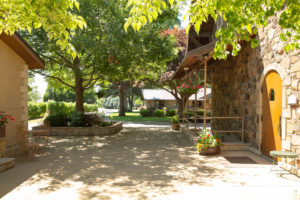 that are more classically structured and austere in their youth, but with the ability to go the long haul. I feel that it bears mentioning that I put some into my own cellar after this tasting.
that are more classically structured and austere in their youth, but with the ability to go the long haul. I feel that it bears mentioning that I put some into my own cellar after this tasting.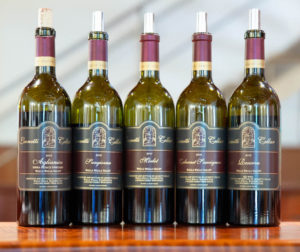 a silky expression, mixing blue and red berry fruits with sweet spice, hints of herbs and gorgeous inner florals. The finish was long with staining fruits, zesty spice, a tug of acidity and framing tannins. This is a great vintage for the Leonetti Merlot. (94 points)
a silky expression, mixing blue and red berry fruits with sweet spice, hints of herbs and gorgeous inner florals. The finish was long with staining fruits, zesty spice, a tug of acidity and framing tannins. This is a great vintage for the Leonetti Merlot. (94 points)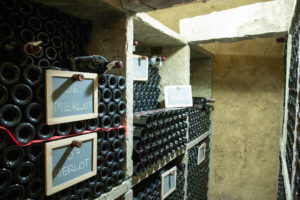 palate, velvety textures hosted a wave of ripe dark fruits, sweet spice and minerals, as inner florals emerged, along with saturating tannins. The finish was long, intense, spicy, but also perfectly balanced, as dark fruit and tannin slowly faded from the senses. The 2016 Reserve is already showing so beautifully, yet it is also built for the long haul. (97 points)
palate, velvety textures hosted a wave of ripe dark fruits, sweet spice and minerals, as inner florals emerged, along with saturating tannins. The finish was long, intense, spicy, but also perfectly balanced, as dark fruit and tannin slowly faded from the senses. The 2016 Reserve is already showing so beautifully, yet it is also built for the long haul. (97 points)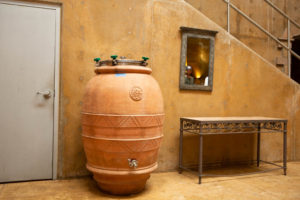 soft textures greeted the senses, yet were quickly firmed up by youthful Aglianico tannin and brisk acids, as spiced black fruits washed across the senses, spiked by saline-minerality and herbal tones. The finish was long and structured, showing a hint of tart citrus, which added a little life to an impossibly young Aglianico. This was raised in Amphora, and it shows like a young high-end Taurasi or Vulture. Bravo. (92 points)
soft textures greeted the senses, yet were quickly firmed up by youthful Aglianico tannin and brisk acids, as spiced black fruits washed across the senses, spiked by saline-minerality and herbal tones. The finish was long and structured, showing a hint of tart citrus, which added a little life to an impossibly young Aglianico. This was raised in Amphora, and it shows like a young high-end Taurasi or Vulture. Bravo. (92 points)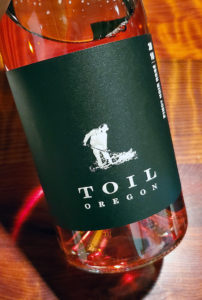 Toil Pinot Noir Rose 2018 – The nose showed a beautiful mix of fresh strawberry and orchard fruits. On the palate, I found soft textures, elevated by brisk acidity, creating a mouthwatering experience, as ripe floral-laced red berry fruits and minerality washed across the senses. The finish was long and zesty, showing a pretty mix of ripe primary fruits. I think the word I’m looking for is “delectable.” (92 points)
Toil Pinot Noir Rose 2018 – The nose showed a beautiful mix of fresh strawberry and orchard fruits. On the palate, I found soft textures, elevated by brisk acidity, creating a mouthwatering experience, as ripe floral-laced red berry fruits and minerality washed across the senses. The finish was long and zesty, showing a pretty mix of ripe primary fruits. I think the word I’m looking for is “delectable.” (92 points)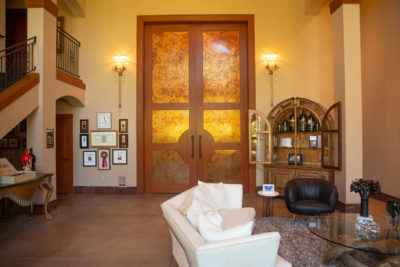 into the 12th bonded Washington State winery in 1978. Of course, today’s success cannot be placed on Alex’s shoulders alone, as Quilceda Creek is a family affair, with a major turning point taking place in the nineties, when his son Paul joined him in the winery. Paul immediately placed a significant focus on vineyard sources and management, planting stakes in some of the region’s top locations, including the renowned Champoux, which is the primary source for their Cabernet Sauvignon today.
into the 12th bonded Washington State winery in 1978. Of course, today’s success cannot be placed on Alex’s shoulders alone, as Quilceda Creek is a family affair, with a major turning point taking place in the nineties, when his son Paul joined him in the winery. Paul immediately placed a significant focus on vineyard sources and management, planting stakes in some of the region’s top locations, including the renowned Champoux, which is the primary source for their Cabernet Sauvignon today.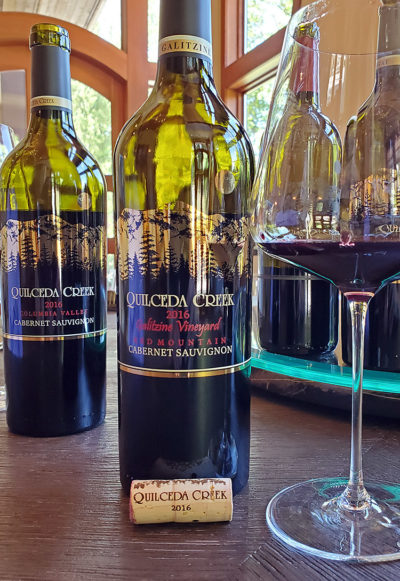 dried floral tones. On the palate, soft yet dense textures were offset by tart blackberry fruits and stimulating acids with sweet inner florals, minerals and slow mounting tannins. The finish was long, energetic, yet still elegant, as ripe dark fruits slowly faded amidst fine grained tannin. (95 points)
dried floral tones. On the palate, soft yet dense textures were offset by tart blackberry fruits and stimulating acids with sweet inner florals, minerals and slow mounting tannins. The finish was long, energetic, yet still elegant, as ripe dark fruits slowly faded amidst fine grained tannin. (95 points)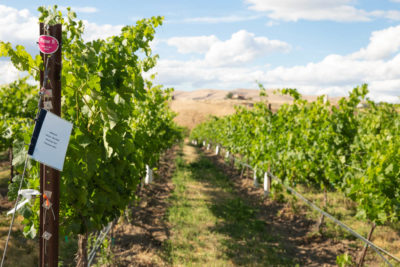 to settle for these. Having said that, this was the visit of the trip. Chris Camarda, who created Andrew Will in 1989, is still 100% in the mix, and he is a true passion-driven winemaker. With fruit coming from the renowned Ciel du Cheval, Champoux and Two Blondes vineyards, Andrew Will continues to be one of the finest artisan producers and proponents of Washington State wine.
to settle for these. Having said that, this was the visit of the trip. Chris Camarda, who created Andrew Will in 1989, is still 100% in the mix, and he is a true passion-driven winemaker. With fruit coming from the renowned Ciel du Cheval, Champoux and Two Blondes vineyards, Andrew Will continues to be one of the finest artisan producers and proponents of Washington State wine.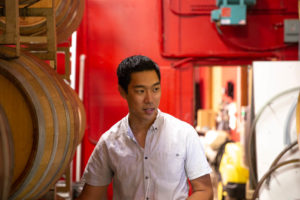 complemented by violette floral tones, sweet herbs and hints of smoke. On the palate, I found soft, enveloping textures, enlivened by brisk acids, as ripe black fruits washed across the senses, firmed up by minerals and sneaky tannins. The finish was long, showing its dark fruits, yet also a gorgeous structure, promising years of development in the cellar. (95 points)
complemented by violette floral tones, sweet herbs and hints of smoke. On the palate, I found soft, enveloping textures, enlivened by brisk acids, as ripe black fruits washed across the senses, firmed up by minerals and sneaky tannins. The finish was long, showing its dark fruits, yet also a gorgeous structure, promising years of development in the cellar. (95 points)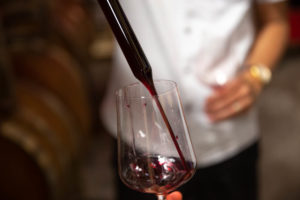 minerals. On the palate, silky textures enveloped the senses, with sweet blueberry and contrasting citrus-laced blackberry, in an expression that was pure elegance. The finish was long, as violet florals resonated, along with ripe blueberry and spice tones. What a pretty wine. (92 points)
minerals. On the palate, silky textures enveloped the senses, with sweet blueberry and contrasting citrus-laced blackberry, in an expression that was pure elegance. The finish was long, as violet florals resonated, along with ripe blueberry and spice tones. What a pretty wine. (92 points)